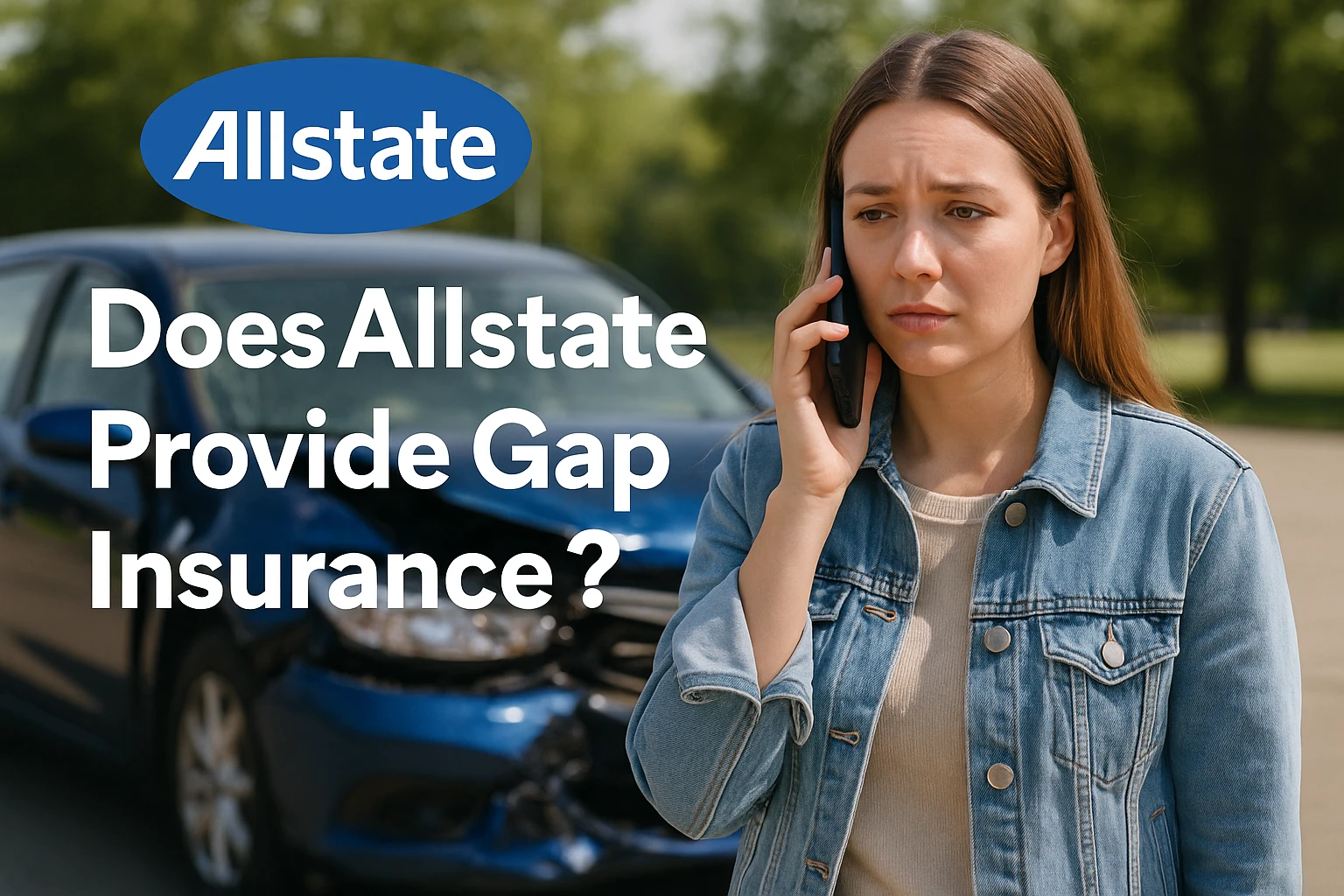Allstate Prior Insurance Requirements Not Met? Meaning, Fixes & Solutions [2025 Guide]
📑 Table of Contents
- Understanding Allstate's “Prior Insurance Requirements Not Met” Notice
- 1. What Does “Prior Insurance Requirements Not Met” Mean?
- 2. Why Prior Insurance History Matters to Allstate
- 3. How Does This Affect Your Insurance Quote or Policy?
- 4. Real-Life Example: A Driver’s Experience with Allstate’s Rule
- 5. How Long Must You Be Continuously Insured for Allstate?
- 6. Common Reasons People Don’t Meet Prior Insurance Requirements
- a. Financial Hardship
- b. Sold a Car
- c. Relocation
- d. Military Deployment or Travel
- 7. What to Do If You Didn’t Meet Allstate’s Prior Insurance Rule
- a. Shop Around
- b. Get a Non-Owner SR-22 or Basic Policy
- c. Contact an Allstate Agent
- d. Start Coverage ASAP
- 8. How to Explain a Lapse to Allstate
- 9. Can You Still Get Allstate Discounts Without Prior Insurance?
- 10. Expert Tip: Use a Short-Term High-Risk Policy to Build History
- 11. What If You Were Previously With Allstate and Still Got the Message?
- 12. State-by-State Variations in Allstate’s Policy
- 13. LSI Keywords to Include While Researching or Applying
- 14. Steps to Take If You’re Denied or Quoted Too High
- 15. Final Thoughts: Don’t Let a Lapse Define Your Insurance Future
- FAQs About Allstate’s Prior Insurance Rule
Understanding Allstate's “Prior Insurance Requirements Not Met” Notice
Have you recently received a message from Allstate stating “Prior insurance requirements not met” during your auto insurance application or renewal? If yes, you're not alone—and it can be confusing. Let’s break it down in simple terms, understand what it really means, how it affects your premium, and what steps you can take to fix it.
This article unpacks the entire issue with real-life examples, expert insights, and actionable advice to help you navigate Allstate’s underwriting rules and improve your insurability.
1. What Does “Prior Insurance Requirements Not Met” Mean?
When Allstate says your “prior insurance requirements were not met,” it typically means you haven’t maintained continuous auto insurance coverage for a certain period—usually six months or more. This is a key underwriting factor.
Allstate—and many other top insurers—prefer applicants who have shown “insurance responsibility” over time. A gap in insurance signals higher risk, potentially due to:
-
Lapses in policy payments
-
Driving without insurance
-
Switching insurers with a gap
-
Never having insurance before
This doesn't mean Allstate will outright reject you—but it can impact your rate, policy options, or eligibility for certain discounts.
2. Why Prior Insurance History Matters to Allstate
Insurance companies assess risk through many lenses, and prior continuous coverage is one of the most significant.
According to the Insurance Information Institute (III):
“Drivers with continuous coverage typically have fewer claims, are more financially responsible, and are seen as lower risk.”
From Allstate's perspective, if you’ve been insured consistently:
-
You’re likely a cautious driver
-
You understand legal responsibilities
-
You pose a lower financial risk
But if you haven’t, they may assume you’re a higher risk—even if that’s not your story.
3. How Does This Affect Your Insurance Quote or Policy?
Let’s say you're trying to get a quote from Allstate, and you’ve been uninsured for three months. You might still get a policy, but:
-
You may be quoted a higher premium
-
Certain policy types might be unavailable
-
Discounts like the “safe driver” discount may be excluded
-
A waiting period or additional documentation may be required
In some cases, Allstate may decline to underwrite you until you’ve had continuous coverage for a specific period (like 6 or 12 months).
This can also apply if you're switching insurers and there’s even a one-day gap in coverage. Always start your new policy before your old one ends.
4. Real-Life Example: A Driver’s Experience with Allstate’s Rule
Sarah, a 29-year-old from Texas, sold her car during COVID and let her insurance lapse for 10 months. When she got a new car and applied with Allstate:
“They told me my rate would be 40% higher because I hadn’t had insurance for nearly a year. I felt penalized for something that made sense at the time.”
Unfortunately, Sarah’s story isn’t unique. Lapses—even for practical reasons—can hurt you in the eyes of insurers like Allstate.
5. How Long Must You Be Continuously Insured for Allstate?
The required duration varies slightly depending on your state, driving history, and policy type, but Allstate typically expects:
-
6 months of prior continuous coverage for standard policies
-
12 months or more for preferred rates and tiered discounts
-
No major gaps (30+ days) in the past year
If you’re a new driver, Allstate may waive this requirement in some cases. But adult drivers without a history of insurance often face hurdles.
6. Common Reasons People Don’t Meet Prior Insurance Requirements
You’re not alone if you’ve run into this issue. Common causes include:
a. Financial Hardship
Missed payments, job loss, or pandemic-related challenges can lead to a lapse.
b. Sold a Car
Drivers who sell their car often cancel insurance temporarily, not realizing this may affect future rates.
c. Relocation
Moving to a state where you didn’t drive for a while can lead to unintentional lapses.
d. Military Deployment or Travel
If you were overseas or away for extended periods, maintaining U.S. insurance may not have seemed necessary.
7. What to Do If You Didn’t Meet Allstate’s Prior Insurance Rule
Here are your options:
a. Shop Around
Some insurers specialize in non-standard or high-risk coverage. Consider companies like:
-
The General
-
Dairyland Insurance
-
Direct Auto
-
National General
These carriers are more forgiving of coverage gaps and can help you build a new insurance history.
b. Get a Non-Owner SR-22 or Basic Policy
Even if you don’t own a vehicle, getting a non-owner policy or SR-22 insurance can help rebuild coverage time.
c. Contact an Allstate Agent
Allstate agents can manually review your application. If the lapse was due to special circumstances (like military service), they may override system flags.
d. Start Coverage ASAP
The longer you wait, the worse the impact. Secure any level of coverage now to begin resetting the clock.
8. How to Explain a Lapse to Allstate
If your lapse was unintentional or due to extenuating life events, provide documentation:
-
Military orders
-
Proof of vehicle sale
-
Proof of financial hardship or unemployment
-
Travel visa or relocation documentation
This won’t guarantee approval, but it strengthens your case.
9. Can You Still Get Allstate Discounts Without Prior Insurance?
It depends on your location and agent flexibility, but generally:
-
You won’t qualify for multi-policy, safe driver, or prior coverage discounts immediately
-
After 6–12 months of clean coverage, you can reapply or re-quote
-
Some discounts, like paperless billing or automatic payments, are still available
Ask your agent to manually check eligibility or consider temporary insurers to bridge the gap until you're discount-eligible again.
10. Expert Tip: Use a Short-Term High-Risk Policy to Build History
Experts suggest:
“Start with a high-risk or non-standard insurer for six months. Keep your driving clean, no missed payments, then reapply to Allstate or another top-tier company.”
This strategy helps you qualify for better rates without long-term commitments.
11. What If You Were Previously With Allstate and Still Got the Message?
Sometimes, even previous Allstate customers receive this notice if:
-
They canceled and later reapplied with a gap
-
Their old policy was terminated for non-payment
-
They changed states and failed to transfer insurance
-
Their policy was inactive for more than 30 days
Call customer service or your old agent to clarify. Internal records can sometimes be reinstated to reduce penalties.
12. State-by-State Variations in Allstate’s Policy
Some states require insurers to accept certain applicants regardless of insurance history. These states may offer:
-
State-assigned risk pools
-
Mandated minimum coverage plans
-
Local exceptions or leniency
For example:
| State | Flexibility with Lapses |
|---|---|
| California | Moderate (Fair Plan exists) |
| Florida | Strict (higher surcharges) |
| Texas | Very strict on lapses |
| New York | Moderate |
| Illinois | Some leniency via agents |
Check with your state’s department of insurance for detailed info.
13. LSI Keywords to Include While Researching or Applying
When dealing with prior insurance issues, you might encounter or need these terms:
-
continuous auto coverage
-
high-risk auto insurance
-
non-standard policy
-
lapse in coverage
-
no prior insurance
-
Allstate policy denial
-
Allstate quote higher than expected
-
first-time car insurance buyer
-
reinstating car insurance
-
SR-22 insurance for lapsed drivers
These help expand your search and connect with more helpful resources.
14. Steps to Take If You’re Denied or Quoted Too High
-
Don’t panic or take it personally – It’s common and fixable
-
Secure any coverage, even basic or non-owner
-
Reapply in 6 months after consistent coverage
-
Ask for underwriting exceptions if you have a valid explanation
-
Use a local agent – They often have more flexibility than online quotes
15. Final Thoughts: Don’t Let a Lapse Define Your Insurance Future
A lapse in coverage might feel like a mark against you, but it doesn’t have to be the end of the road with Allstate. With the right strategy, you can:
-
Build back eligibility
-
Improve your rate
-
Qualify for better plans down the line
Proactive steps and patience are key. Whether you’re switching back to Allstate or starting over with a different carrier, you can get back on track—and it might take less time than you think.
FAQs About Allstate’s Prior Insurance Rule
Q: Will Allstate ever waive the prior insurance requirement?
A: In some cases, yes. Special situations like military deployment, first-time drivers, or clerical errors may qualify for a waiver.
Q: Does a short lapse (less than 30 days) still count?
A: Sometimes. Even short lapses may disqualify you from discounts. Longer lapses have more impact.
Q: How can I prove I had insurance before if Allstate can't verify it?
A: Use policy declarations, proof of payment, or letters from your old insurer.
Q: Can I appeal the quote I got from Allstate?
A: Yes. Work with a local agent who can resubmit your application or request a manual override.

![Allstate Prior Insurance Requirements Not Met? Meaning, Fixes & Solutions [2025 Guide]](https://policyidea.com/storage/uploads/1753515751.webp)





Community Feedback